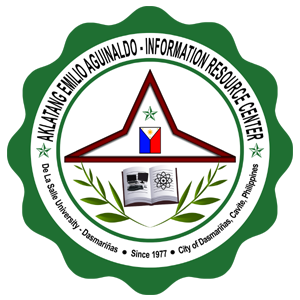Earth`s natural hazards and disasters (Record no. 92842)
[ view plain ]
| 000 -LEADER | |
|---|---|
| fixed length control field | 05761nam a22001937a 4500 |
| 003 - CONTROL NUMBER IDENTIFIER | |
| control field | OSt |
| 005 - DATE AND TIME OF LATEST TRANSACTION | |
| control field | 20250203072917.0 |
| 008 - FIXED-LENGTH DATA ELEMENTS--GENERAL INFORMATION | |
| fixed length control field | 250203b |||||||| |||| 00| 0 eng d |
| 020 ## - INTERNATIONAL STANDARD BOOK NUMBER | |
| International Standard Book Number | 9781639871735 |
| 040 ## - CATALOGING SOURCE | |
| Transcribing agency | HS LRC |
| 050 ## - LIBRARY OF CONGRESS CALL NUMBER | |
| Classification number | GB 5014 |
| Item number | .E37 2021 |
| 245 ## - TITLE STATEMENT | |
| Title | Earth`s natural hazards and disasters |
| Statement of responsibility, etc. | Isaac Andrews |
| 260 ## - PUBLICATION, DISTRIBUTION, ETC. (IMPRINT) | |
| Place of publication, distribution, etc. | New York City |
| Name of publisher, distributor, etc. | Murphy & Moore Publishing |
| Date of publication, distribution, etc. | c2021. |
| 300 ## - PHYSICAL DESCRIPTION | |
| Extent | 236 pages. |
| Other physical details | color illustrations; |
| Dimensions | 28 cm. |
| 504 ## - BIBLIOGRAPHY, ETC. NOTE | |
| Bibliography, etc | Includes index. |
| 505 ## - FORMATTED CONTENTS NOTE | |
| Formatted contents note | 1 Introduction to Natural Disasters 1<br/>Bethany D. Hinga<br/><br/>1.1 Introduction 1<br/><br/>1.2 The Earth System 4<br/><br/>1.3 Natural Disasters 7<br/><br/>1.3.1 Types of Disasters 7<br/><br/>1.4 Definitions 8<br/><br/>1.5 Disasters Are Predictable 9<br/><br/>1.6 The Human Factor 13<br/><br/>1.7 Increasing Risk 14<br/><br/>1.8 Calculated Risks 16<br/><br/>1.9 The Role of Government in Vulnerability and Preparing for Disasters 18<br/><br/>1.10 Disasters and Social Change 21<br/><br/>1.11 Community Response 21<br/><br/>1.12 Chapter in Review 25<br/><br/>Part I Geologic Events as Hazards<br/><br/>2 Plate Tectonics 31<br/>Bethany D. Hinga<br/><br/>2.1 Introduction 31<br/><br/>2.2 Continental Drift 31<br/><br/>2.3 New Data: Magnetism 35<br/><br/>2.4 Seafloor Spreading 38<br/><br/>2.5 Plate Tectonics 38<br/><br/>2.6 Earth Structure 38<br/><br/>2.7 Plate Boundaries 40<br/><br/>2.8 Subduction Zones 45<br/><br/>2.9 Collision Zones 48<br/><br/>2.10 Transform Boundaries 49<br/><br/>2.11 Hotspots 51<br/><br/>2.12 Conclusion 54<br/><br/>2.13 Chapter in Review 54<br/><br/>3 Volcanoes 57<br/>Bethany D. Hinga<br/><br/>3.1 A Lengthy Eruption With an Unexpected End 57<br/><br/>3.2 Magma Generation 64<br/><br/>3.3 Volcano Behavior 70<br/><br/>3.4 Types of Volcanoes 72<br/><br/>3.5 The Case of Mount St. Helens 83<br/><br/>3.6 Hazards of Composite Volcanoes 90<br/><br/>3.7 Mitigation 96<br/><br/>3.8 Chapter in Review 97<br/><br/>4 Earthquakes 101<br/>Bethany D. Hinga<br/><br/>4.1 Introduction 101<br/><br/>4.2 What Is an Earthquake? 107<br/><br/>4.3 Seismic Waves 111<br/><br/>4.4 How Do Earthquakes Work? 123<br/><br/>4.5 Earthquake Hazards 129<br/><br/>4.6 Prince William Sound Earthquake 138<br/><br/>4.7 Mitigation Strategies 139<br/><br/>4.8 Conclusion 142<br/><br/>4.9 Chapter in Review 142<br/><br/>5 Tsunamis 145<br/>Bethany D. Hinga<br/><br/>5.1 Introduction 145<br/><br/>5.2 Unimak Island Earthquake and Tsunami, 1946 145<br/><br/>5.3 Wave Creation 149<br/><br/>5.4 Wave Characteristics 150<br/><br/>5.5 Wave Parameters 152<br/><br/>5.6 Case Studies 153<br/><br/>5.7 Landslide-Generated Tsunami 161<br/><br/>5.8 Mega-Tsunamis 161<br/><br/>5.9 Volcano-Generated Tsunamis 161<br/><br/>5.10 Mitigation of Tsunami Hazards 164<br/><br/>5.11 Conclusion 166<br/><br/>5.12 Chapter in Review 166<br/><br/>6 Earth Movements 169<br/>Bethany D. Hinga<br/><br/>6.1 The Role of Gravity in Shaping the Earth 169<br/><br/>6.2 Venezuela, 1999 169<br/><br/>6.3 Types of Earth Movements 172<br/><br/>6.4 Mass-Wasting Triggers 188<br/><br/>6.5 Mitigation of Hazards 188<br/><br/>6.6 Conclusion 192<br/><br/>6.7 Chapter in Review 193<br/><br/>Part II Weather and Climate as Hazards<br/><br/>7 Atmosphere and Weather 197<br/>Bethany D. Hinga<br/><br/>7.1 Introduction 197<br/><br/>7.2 The Earth's Atmosphere 197<br/><br/>7.3 Solar Radiation 199<br/><br/>7.4 Weather 202<br/><br/>7.5 Air Masses and Fronts 212<br/><br/>7.6 High and Low Pressure Systems 214<br/><br/>7.7 Conclusion 217<br/><br/>7.8 Chapter in Review 217<br/><br/>8 Severe Weather 221<br/>Bethany D. Hinga<br/><br/>8.1 Blizzard on the Plains 221<br/><br/>8.2 Severe Weather Events 225<br/><br/>8.3 Conclusion 251<br/><br/>8.4 Chapter in Review 252<br/><br/>9 Floods 255<br/>Bethany D. Hinga<br/><br/>9.1 Introduction 255<br/><br/>9.2 Central China Flood 255<br/><br/>9.3 The Nature of Streams 258<br/><br/>9.4 Types of Floods 265<br/><br/>9.5 Flood Mitigation 274<br/><br/>9.6 Chapter in Review 278<br/><br/>10 Hurricanes 281<br/>Bethany D. Hinga<br/><br/>10.1 Introduction 281<br/><br/>10.2 Hurricane Maria, 2017 281<br/><br/>10.3 Tropical Cyclones 287<br/><br/>10.4 Hurricane Hazards 295<br/><br/>10.5 Mitigation 304<br/><br/>10.6 Conclusion 304<br/><br/>10.7 Chapter in Review 305<br/><br/>11 Climate Change 307<br/>Jillian Gregg and John Helms<br/><br/>11.1 Slushballs and Greenhouses: What the Geologic Record Says About Paleoclimate Compared to the Current Stable Climate That Has Supported Human Civilization Over the Past 10,000 Years 307<br/><br/>11.2 Climate Change Basics 310<br/><br/>11.3 Natural Hazards Caused Directly and Indirectly by Greenhouse Gas Emissions and Climate Change 334<br/><br/>11.4 Ocean Impacts 351<br/><br/>11.5 Mitigation of Hazards 356<br/><br/>11.6 Geoengineering 361<br/><br/>11.7 Adaptation 363<br/><br/>11.8 Chapter in Review 365<br/><br/>12 Wildland Fires 369<br/>Bethany D. Hinga<br/><br/>12.1 Introduction 369<br/><br/>12.2 Fire Basics 372<br/><br/>12.3 Fire Behavior 375<br/><br/>12.4 Firefighting in Public Lands 382<br/><br/>12.5 Mitigation of Fire Hazards 386<br/><br/>12.6 Conclusion 387<br/><br/>12.7 Chapter in Review 387<br/><br/>Part III Other Hazards<br/><br/>13 Biological Hazards With COVID-19 Case Study 393<br/>Anni Moore and Austin Nuxoll<br/><br/>13.1 Biological Disasters 393<br/><br/>13.2 Introduction to Microbes 397<br/><br/>13.3 Types of Microbes 398<br/><br/>13.4 Microbes and the Earth System 411<br/><br/>13.5 Factors That Put Populations at Risk 415<br/><br/>13.6 Diseases in the Food Supply 422<br/><br/>13.7 Mitigation of Hazards 423<br/><br/>13.8 Conclusion 428<br/><br/>13.9 Chapter in Review 429<br/><br/>14 Hazards From Space 433<br/>Kelli Wakefield and Joel Berrier<br/><br/>14.1 Space Hazards 433<br/><br/>14.2 Introduction 434<br/><br/>14.3 A History of Catastrophe 434<br/><br/>14.4 Measuring Risk 445<br/><br/>14.5 What Can We Do? 456<br/><br/>14.6 Solar Events 459<br/><br/>14.7 Earth's Future 463<br/><br/>14.8 Chapter in Review 463 |
| 520 ## - SUMMARY, ETC. | |
| Summary, etc. | Earth’s Natural Hazards and Disasters is a textbook for undergraduates that challenges students to think critically about disasters. It explains the science behind natural events and explores how to understand risk and prepare for disasters.<br/><br/>About this volume:<br/><br/>Covers hazards in the geosphere, hydrosphere, atmosphere, and biosphere<br/>Explains the science of hazards in accessible terms<br/>Detailed case studies of specific disasters for each type of natural event<br/>Explores data-based risk mitigation strategies<br/>Discusses the roles of scientists, public officials, and the general public in hazard management |
| 942 ## - ADDED ENTRY ELEMENTS (KOHA) | |
| Source of classification or shelving scheme | Library of Congress Classification |
| Koha item type | Circulation |
| Withdrawn status | Lost status | Source of classification or shelving scheme | Damaged status | Not for loan | Collection code | Home library | Current library | Shelving location | Date acquired | Source of acquisition | Inventory number | Total Checkouts | Full call number | Barcode | Date last seen | Copy number | Price effective from | Koha item type |
|---|---|---|---|---|---|---|---|---|---|---|---|---|---|---|---|---|---|---|
| Library of Congress Classification | Circulation | DLSU-D HS Learning Resource Center | DLSU-D HS Learning Resource Center | Circulation | 09/15/2023 | Senior HS | 3SHS2019001106 | GB 5014 .E37 2021 | 3SHS2019001106 | 02/03/2025 | 001106 | 02/03/2025 | Circulation |










